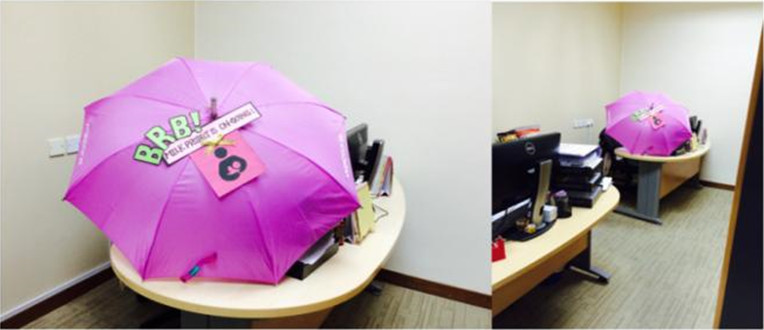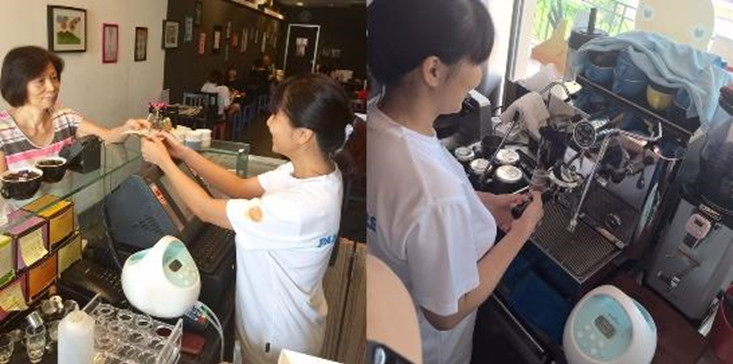Breastfeeding alone has its own set of challenges. You may experience sore nipples and engorgement, or go through an emotional rollercoaster ride of dealing with your baby’s refusal to feed. For mummies returning to work, there’s an added factor – expressing breastmilk at work. Will I be able to pump regularly at work? What will my colleagues or boss say? These are some questions you might ask.
Although health experts recommend all mothers to breastfeed their newborn for at least the first six months, sadly, mothers are often discouraged to give up breastfeeding when they return to work, before the six month mark. In a survey conducted by NTUC U Family, 51% of the mothers said they stopped providing breastmilk to their child because of workplace challenges.

Challenge #1: Lack of time to express breastmilk
Due to the nature of some industries and professions, it may be difficult for mothers to make use of the full maternity leave entitlement at one go. Sometimes, mothers have to go back to work after two or three months, depending on their job, where the remaining leave will be used over time. With such work schedules, it can be tough for mothers to find the time to express their breastmilk regularly.
Solution: Talk to your boss, and be familiar with your pumping equipment
Sit down and speak to your boss about your current situation and discuss if an alternative work arrangement or schedule is possible during this period.
To maximise your pumping sessions at work, it’s important to have practice sessions at home beforehand, for a seamless and fuss-free transition. Before getting a pump, assess your work activities to see what type of pump fits best your job role. Manual or Electronic? Dual or single pump?
Challenge #2: Lack of proper nursing facilities or resources
Some workplaces do not have proper nursing rooms for breastfeeding mothers due to various reasons. As a result, some mothers resort to pumping their milk in the storeroom or office toilet. This is strongly discouraged as there could be a chance of milk contamination from touching the toilet door handles, toilet seats, and toilet bowl.
Solution: Improvise
No nursing rooms at work? That’s okay. All you need is a little innovation and improvisation. Take legal Counsel Chu Wen Ling as an example. A mother of two who breastfed for six months, Wen Ling created her own nursing corner at her work desk. How did she do it? She used a big umbrella with signs to inform people that she was breastfeeding and to cover herself while she expressed her milk.
 Breastfeeding in session! Legal Counsel Chu Wen Ling makes breastfeeding work for her with a little innovation and lots of perseverance.
Breastfeeding in session! Legal Counsel Chu Wen Ling makes breastfeeding work for her with a little innovation and lots of perseverance.
Challenge #3: Unsupportive bosses or returning to a male dominated industry
Even if the workplace has facilities that accommodate to working mothers, many companies have not implemented flexible hours for their employees. It’s important to have employers who are pro-family; to foster a company culture that is empathetic to the needs of mothers returning to work after birth.
Solution: Speak up
Sometimes, bosses do not know the benefits and importance of breastfeeding. They could also be unaware of the needs of a working mother. Play your part by voicing your struggles and letting them know about the benefits of breastfeeding. Maintain open and honest communication with your supervisors. If a flexible work arrangement is in place, ensure that your performance and productivity remain consistent.
![]()
Need help to talk to your supervisor?
U Family, an NTUC initiative, is the voice for working families. They advocate the building of strong and happy families by championing pro-family measures in the community and workplaces. U Family started Project Liquid Gold to raise awareness of the importance of breastfeeding and to advocate for more support for new mothers who are returning to work after their maternity leave.
![]()
#4 Colleagues who are not aware
Getting weird looks from your colleagues when you go for all these ‘breaks’ during the day? Without proper communication, they may misunderstand your frequent ‘breaks’ as something else. This may lead to unwanted tension and unhappiness.
Solution: Tell your colleagues

Don’t be shy to let them know why you are taking these ‘breaks’ to avoid any misunderstanding or assumptions. If you have a fellow colleague who just came back from maternity leave, show some concern and offer your help. Little gestures go a long way.
Even though she was not a mother herself, Ms Wan Fen, who works at the Singapore Eye Research Institute, went out of her way for her breastfeeding colleague. She converted a room in the office to a lactation room by covering up a glass panel in the room with huge posters.
Challenge #5: Change in lifestyle
Breastfeeding requires significant mental and emotional commitment as well as investment in time. You may need to sacrifice ‘me’ time to express milk or make special efforts to take care of your baby. It requires sheer willpower and discipline to express regularly and nurse your baby for the long haul.
Solution: Prep yourself and plan ahead
To get a headstart, practice pumping at home and check if you have easy-access clothes that are also formal enough to wear to work. Make a schedule of when you need to pump so you can plan ahead if there are any meetings. A short first week back at work will also help to ease your transition. You can plan to start on a Wednesday or Thursday after your maternity leave.
For mothers who run their own businesses, it can be difficult to squeeze in time to pump especially when there is a shortage of manpower. But that did not deter Kristy Melissa, owner and cafe manager of Little Pancakes. Even though she had a hectic schedule of running her own cafe, she was set on breastfeeding for as long as she can. After her first month, she went back to work and used a hands-free pump set so that she can pump milk while taking orders, scrambling eggs, making coffee or washing the dishes. Now that’s one committed and determined mama!
 Pumping on-the-go made possible using a hands-free pump set
Pumping on-the-go made possible using a hands-free pump set
Working And Breastfeeding Is Possible
No matter what breastfeeding challenges you face at work know that it is possible to continue your breastfeeding journey. With the right set of attitude, knowledge and practice, coupled with a supportive environment, breastfeeding can become a natural part of your working life. Don’t lose faith!
Did you breastfeed at work? What are some struggles you face at your workplace during breastfeeding? Share your thoughts with us below!
This article is part of the Breastfeeding with Love campaign, initiated by The New Age Parents and New Age Pregnancy.
Join the Breastfeeding with Love Group to find out more and be part of our breastfeeding online community!
Click on the logos to find out more about our supporting partners.
|
|
* * * * *
Like what you see here? Get parenting tips and stories straight to your inbox! Join our mailing list here.
Want to be heard 👂 and seen 👀 by over 100,000 parents in Singapore? We can help! Leave your contact here and we’ll be in touch.



























































Leave a Comment: